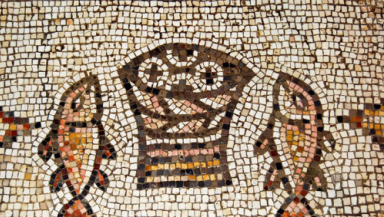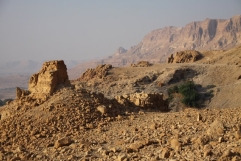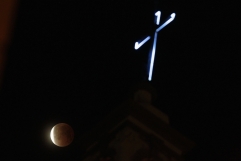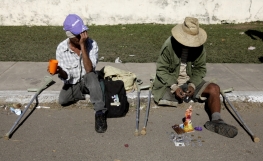
The story of Jesus feeding the 5,000 is one that's puzzled sceptics and believers too. Sceptics dismiss the miracle story or explain it away. Perhaps what 'really' happened, they say, is that many people had brought food with them to the event and realised that others hadn't – so the 'real' miracle was the miracle of sharing.
For many readers – and not just believers – this is just a bit too sentimental, like a really bad Sunday school lesson. On the other hand, if you believe the miracle took place as advertised, what exactly does it mean? No one was in danger of starving to death, after all. If Jesus is the Son of God, should he really be getting into the mass catering business?
The story is told in told in Matthew 14:13-21, Mark 6: 30-44, Luke 9:10-17 and John 6: 5-13, and there are are at least three things to say about it.
First, it revisits Old Testament stories about miraculous multiplications of food: the manna and quails provided through Moses in the wilderness, Elijah in 1 Kings 17, Elisha in 2 Kings 4. Jesus is the heir to these great men, only more so. The readers of the story would have understood exactly what was being said: Jesus didn't come out of nowhere, he represents the culmination of God's grace revealed in the Old Testament.

Second, providing food is a symbol of God's greater provision. Today, at least in developed countries, food insecurity is – generally speaking – a thing of the past. We can have when we want when we want it, as long as we can pay for it. Not everyone can, and we should not deny the scandal of real hunger in rich countries. But in Jesus' time hunger was an obvious and pressing reality. In feeding people Jesus was choosing a powerful image to demonstrate God's care for everyone. It is a promise of a future where no one will hunger again, in body, mind or spirit.
Third, Jesus did not feed the 5,000. Only in John's Gospel do we read that. In the accounts given by Matthew, Mark and Luke, it's clear that he gave the bread and fish to his disciples, and they distributed it to the people. John writes in a way that stresses the source of the provision in Christ, but the others make it clear what the mechanism was.
This is a profound exploration of the collaborative nature of the continuing work of Christ. He tells his disciples, faced with the hungry crowds, "You give them something to eat" (Mark 6:37). They are, of course, unable to do so; the task is beyond any human power. When Jesus multiplies the loaves and fishes, though, instead of handing them round himself he gives them to his disciples to serve. They are commanded to give, and then they are given the resources to give. The nourishment they are enabled to provide is inexhaustible, because its source is God himself.
So this story is very challenging. Jesus did not feed the 5,000; instead, he made it possible for his disciples to do so. It is the same today. As St Teresa of Avila said: "Christ has no body now but yours. No hands, no feet on earth but yours. Yours are the eyes through which he looks compassion on this world. Yours are the feet with which he walks to do good. Yours are the hands through which he blesses all the world. Yours are the hands, yours are the feet, yours are the eyes, you are his body. Christ has no body now on earth but yours."
Follow Mark Woods on Twitter: @RevMarkWoods

















